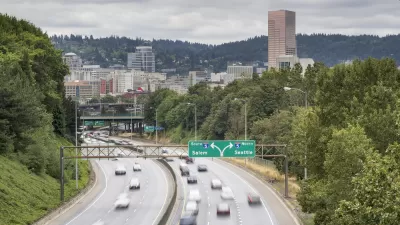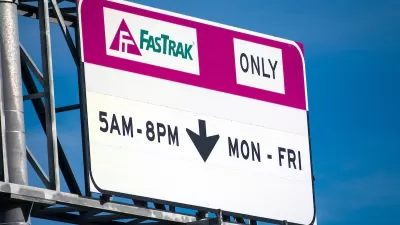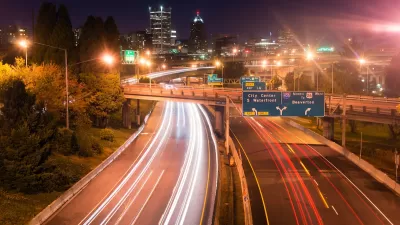The man in charge of public transit in the land of streetcars, bridges without cars, and bike-riding congressmembers is calling for three large highway expansion projects.

"TriMet's general manager [Neil McFarlane] says four big projects — only one of them a light-rail line — must be built if the Portland region is to avert traffic gridlock in the next two decades," reports Peter Wong.
The other three big projects: highways. Wong lists each of three problematic bottlenecks cited by MacFarlane, with more detail in the article: 1) Rose Quarter in Portland, where Interstates 5 and 84 converge, 2) Highway 217 from Tigard to Cedar Hills, and 3) I-205, which narrows from three to two lanes in each direction between Stafford Road in West Linn and the George Abernethy Bridge.
MacFarlane acknowledged in remarks made to the Washington County Public Affairs Forum that "it might be considered unusual for the regional transit agency to promote highway projects in addition to the Southwest Corridor line proposed from downtown Portland to Bridgeport Village in Tualatin." However, MacFarlane says the regions leaders agree. Wong also reports that the Oregon Department of Transportation "has begun project development to estimate costs" on the three state highway projects.
Michael Andersen saw Wong's article, and took to the pages of Bike Portland to critique the assumptions behind MacFarlane's argument. Examining the city's performance on several metrics, reaching far outside considerations of congestion and mobility, Andersen decrees: "Every picture tells the same story: the freeway-poor Portland area is not only a non-burden on the state economy. It is the main force driving the state economy."
Then, the message Andersen hopes the region's get from that conclusion: "traffic congestion is not a cause of economic collapse. It is an effect of economic success."
FULL STORY: Transit chief: Build light-rail line, three highway projects

Planetizen Federal Action Tracker
A weekly monitor of how Trump’s orders and actions are impacting planners and planning in America.

Maui's Vacation Rental Debate Turns Ugly
Verbal attacks, misinformation campaigns and fistfights plague a high-stakes debate to convert thousands of vacation rentals into long-term housing.

Cuomo Is the Candidate of Both NIMBYs and Developers. What Gives?
In the New York City mayoral race, odd bedfellows align to preserve the housing status quo.

San Antonio and Austin are Fusing Into one Massive Megaregion
The region spanning the two central Texas cities is growing fast, posing challenges for local infrastructure and water supplies.

Charlottesville Temporarily Has No Zoning Code
A judge ordered the Virginia city to throw out its newly revised zoning code, leaving permitting for new development in legal limbo.

In California Battle of Housing vs. Environment, Housing Just Won
A new state law significantly limits the power of CEQA, an environmental review law that served as a powerful tool for blocking new development.
Urban Design for Planners 1: Software Tools
This six-course series explores essential urban design concepts using open source software and equips planners with the tools they need to participate fully in the urban design process.
Planning for Universal Design
Learn the tools for implementing Universal Design in planning regulations.
Heyer Gruel & Associates PA
JM Goldson LLC
Custer County Colorado
City of Camden Redevelopment Agency
City of Astoria
Transportation Research & Education Center (TREC) at Portland State University
Jefferson Parish Government
Camden Redevelopment Agency
City of Claremont





























